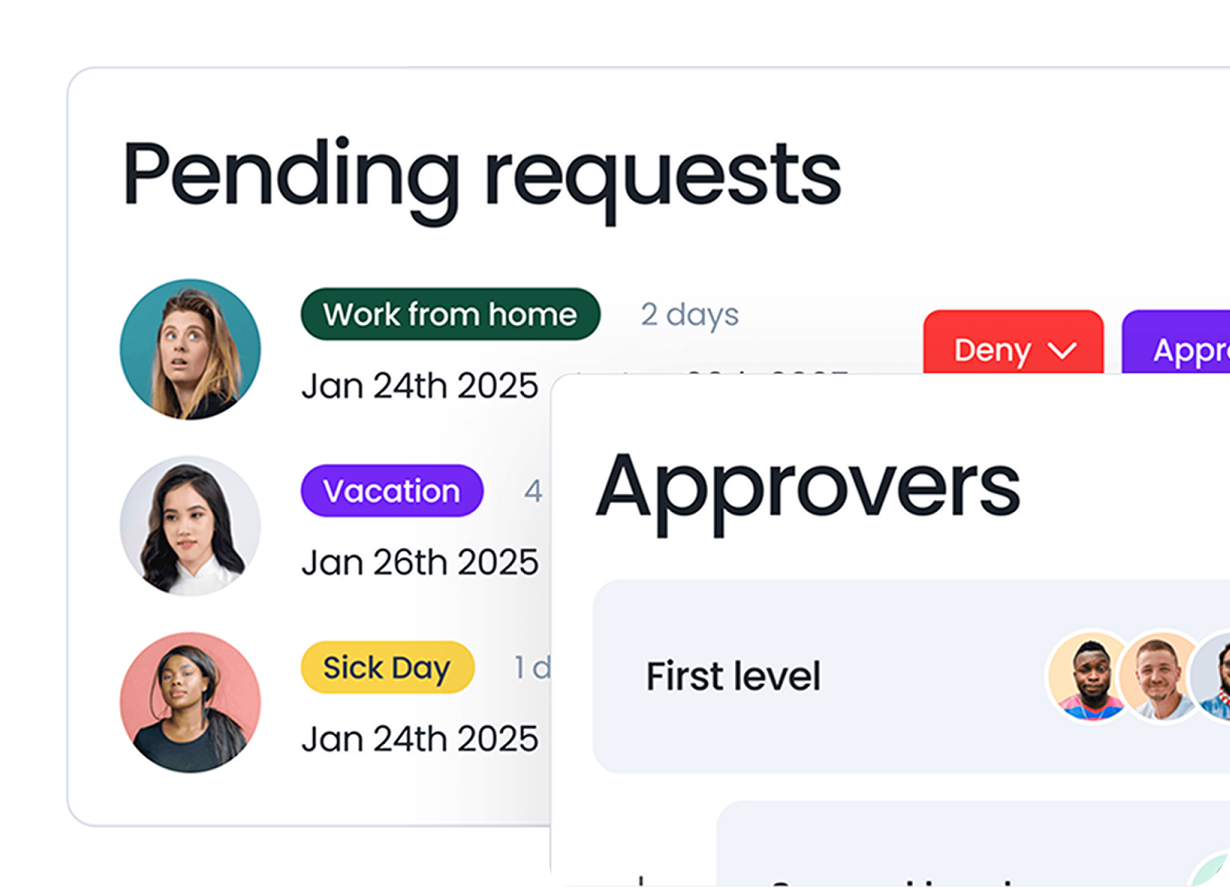Last updated on July 23, 2025
Fair compensation is essential for a happy, healthy workforce. But, what happens when you need your team to go above and beyond their regular working hours?
Employers commonly recognize that effort in two ways: compensatory time off (comp time) or overtime pay.
So how do you know which to implement with your team?
These two forms of overtime benefits serve different purposes and offer unique advantages. But, choosing one over the other is not just about your team's preference, a lot of it has to do with the legality and eligibility of your employees.
In this article, we’ll explore the key differences between comp time vs overtime pay to help you make the right choice for your workforce and learn how to track it accurately for utmost compliance and peace of mind.
What is Comp Time?
Compensatory time off is a compensation option in which you pay employees for overtime work by awarding them PTO instead of overtime pay.
So, instead of having cash deposited into their bank accounts, workers can opt for paid vacation time corresponding to the amount of time they’ve worked overtime.
Similar to overtime, compensatory leave is usually calculated at a ratio of 1.5 hours per hour of overtime worked. That means that if an employee works 5 hours of overtime, they’ll have 7.5 hours of PTO added to their bank.
Eligibility
In the US, under the Fair Labor Standards Act (FLSA) guidelines, comp time is generally only allowed for exempt employees, meaning those who are salaried, earn at least $35,568 per year, and aren’t eligible for overtime pay. It’s typically used in the public sector, where government agencies can offer comp time instead of overtime pay for certain roles like law enforcement, firefighting, or emergency services, but only under specific conditions.
In Canada, eligibility for comp time is less regulated and instead relies on a written agreement, often in the format of an employment contract, in which the employee agrees to receive PTO in place of overtime pay.
What is Overtime Pay?
Overtime pay is a form of additional compensation for employees who work beyond their standard working hours, usually over 40 hours per week. Unlike comp time, which offers flexibility, overtime pay provides immediate financial compensation.
Eligibility
In the US, the Fair Labor Standards Act (FLSA) requires that nonexempt employees get overtime pay for any hours worked over 40 in a week. They must be paid at least 1.5 times their regular hourly rate, and overtime pay must be included in the same paycheck as the extra hours worked. There’s no limit to how many hours employees aged 16 or older can work in a week.
![]()
Which is Better for Your Team?
Deciding between compensatory time off and overtime pay depends on many factors, including your team’s structure, budget, legal obligations, and cultural values.
Here’s a closer look at how to make the right choice for your organization:
Employee Preferences: Do your employees value flexibility and extra time off, or would they prefer to receive additional compensation? Gathering direct feedback through surveys or one-on-one discussions can help guide your decision.
Budget: Overtime pay can quickly increase labor costs, especially during high-demand periods. Comp time can provide a way to acknowledge overtime work without immediately impacting payroll, but it does result in future time off that must be managed.
Legal Compliance: This is the most important factor. Federal and state laws impose strict limits on how and when comp time can be given in place of overtime pay, particularly for non-exempt employees. In the private sector, comp time is often not allowed under FLSA regulations, so legal advice should be consulted before moving forward.
Ultimately, the best option is the one that:
- Aligns with your company’s values,
- Respects your employees’ needs
- Is legally permitted
If done right, either approach can contribute to a healthier, more motivated workforce.
Tracking Comp Time VS Overtime Pay
Once you’ve decided how to compensate your team for overtime, whether through pay or time off, the next challenge is keeping track of it all.
Tracking Overtime Pay
For companies offering overtime pay, the tracking typically falls under payroll. Timekeeping systems must accurately log extra hours worked, and payroll must apply the correct pay rates. While many payroll systems handle this well, the process still relies on accurate input and regular audits to stay compliant.
Tracking Comp Time
Comp time, on the other hand, can be trickier to manage, especially if you’re tracking it manually. Unlike overtime pay, it needs to be accounted for within your leave management process, not just payroll. There needs to be oversight from the moment it’s accumulated to the moment it's used, which may be up to 6 months later (depending on your policy).
That’s why Vacation Tracker offers a dedicated feature for managing Time Off in Lieu (TOIL), allowing teams to accurately track and manage compensatory time off alongside other leave types.
![]()
Here’s how TOIL works in Vacation Tracker:
- Employees request TOIL after working overtime. Hours can only be logged after they’ve been worked, not in advance, ensuring accuracy and preventing misuse.
- Managers review and approve requests. Once approved, TOIL is added to the employee’s leave balance.
- Admins set the rules. You can configure who’s eligible to request TOIL, either all users or just admins and approvers and adjust settings, including expiry dates, based on your internal policies.
- TOIL can be requested in as little as one-hour increments for total accuracy and balances that reflect the actual amount of overtime worked.
- Track TOIL alongside all other leave types. Balances are updated in real-time, so both employees and managers know exactly how much comp time is available and when it’s being used. Managers can export reports that identify how much of each leave type is TOIL compared to regular accrued leave.
This approach removes the need for spreadsheets or back-and-forth communication, giving your team a centralized, transparent way to manage earned time off.
If you already offer leave in lieu but track it manually, switching to an automated system like Vacation Tracker can help you stay compliant, avoid errors, and give your team the flexibility they need.
Learn how to manage time off without
Tracking Can Be
confusion, delays, or admin headaches. 
Comp Time vs. Overtime Pay Recap
Choosing between comp time and overtime pay depends on your team’s setup, legal requirements, and work culture. Overtime pay is a clear and common option for private companies, especially since it’s required for most nonexempt employees. Comp time, on the other hand, offers more flexibility but is usually only allowed in the public sector under specific rules.
No matter which option you go with, keeping track of it accurately is key. Using Vacation Tracker can help you manage comp time and overtime easily, making sure every extra hour is recorded and your team stays informed and supported.

Claudia
Claudia is an experienced marketer with a passion for writing and creating engaging content that connects with readers.




